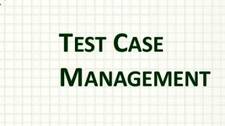Upgrade & Secure Your Future with DevOps, SRE, DevSecOps, MLOps!
We spend hours on Instagram and YouTube and waste money on coffee and fast food, but won’t spend 30 minutes a day learning skills to boost our careers.
Master in DevOps, SRE, DevSecOps & MLOps!
Learn from Guru Rajesh Kumar and double your salary in just one year.
Source:- ulitzer.com
If you’ve used test case management tools before, you’ll understand that there are a range of products on the market. There are old standards that have been around since before the dawn of the World Wide Web, and there are relative market newcomers that offer different levels of sophistication. Here are the factors that make the difference between test case management tools that help and those that hinder.
Test Case Management Tools Should Cooperate with Issue Management Tools
Your test case management tools should integrate with any and every tool your organization uses to track both software development and software quality. If your developers and project managers are using Atlassian to track feature development, your test case management tools should be able to read data and link between the various tools, such as Jira and Confluence.
Your test case management tools shouldn’t dictate; they should interoperate. Make sure that you choose test case management tools that take the time to work with the tools your team is already using.
Don’t Embrace Complexity (But don’t Avoid It Either)
Several products on the market take a page out of ITIL and pile on bad user interfaces to create some of the most complex test case management tools available. If you need to consult a flowchart to create a test plan, you will want to look for test case management tools that have adopted a simpler, more focused approach to creating and managing test cases.
There are certainly test case management tools on the market that over-emphasize simplicity. In a large IT organization, a test case can involve multiple subsystems and several teams. Make sure that your test case management tools present a simple view of test cases and software requirements while also offering the ability to add more complexity if it is warranted.
Web-First Design
I won’t mention the names of bad test case management tools, but you can tell which ones were developed in the 1990s and which ones were developed this century by the way they present themselves on the web.
If your test case management tool feels like someone’s first web application or if it looks like an attempt to reimplement Oracle Forms in a web page, there’s a good chance that your entire QA team will be slowed down and you’ll have an awful experience. Don’t subject your teams to poorly designed web tools from big IT vendors. Use tools like Plutora that were designed for the web first.
Modern Authentication with Single Sign-On
You shouldn’t have to call your IT help desk to get a password reset in your test case management tool. Your tool should have seamless integration with Single Sign-On (SSO) using standards such as SAML to offer a wide range of interoperability with other tools.
The worst offense in a large organization is a tool that doesn’t interoperate with authentication. If you have to remember a separate password for a tool, then this tool will be ignored by many in your organization.
An Understanding of Your Organization
Test management tools should understand your organizational model. The tool should have direct integration with Active Directory or LDAP that gives visibility into team structure and user roles, and this information should be used to provide users with the appropriate context for test case management.
Without knowledge of your organization, a test case management tool will require manual intervention whenever an organization changes. In a large IT organization, teams and staff are constantly shifting to new teams and new priorities. Make sure that you don’t have to assign someone the full-time job of reconciling test case management tools with the latest reorg.
The Right Data at the Right Time
Good tools provide users with the right data at the right time. If you need to inspect a matrix of test cases versus software requirements, you’ll need a tool with a built-in and quick, color-coded snapshot of status. Your test case management tools should ship with some essential, pre-configured dashboards that can help you get immediate insight into progress, instead of offering users the ability to create custom reports.
Test case management tools should have expertise built-in. When you use good test case management tools, you’ll be able to benefit from the decades of experience that is ‘baked into’ the design of the product. Use a tool that has been developed to deliver just the right information at just the right time without creating a sense of complexity and burden.
If you choose test case management tools based on these suggestions, your software quality and software development teams will thank you. Remember that the most important factor in selecting a tool is freedom and simplicity. Use tools that enable your teams to work smarter and embrace a tool that understands that simplicity is critical in today’s busy software development lifecycle.
